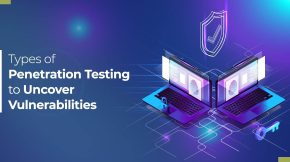Choosing the Right Financial Services LMS
Finance leaders know what it’s like to deal with changing rules, new technology, and the pressure to keep teams in sync. Many are searching for a Financial services LMS because results show it works. In 2023, 95% of banking and finance leaders said digital adaptability was critical for the future (harvardbusiness.org). The focus now is on using Learning Management Systems to help organizations handle these changes.
LMS Adoption in Financial Services
The financial sector has adopted LMS for financial services quickly. Most companies now use some kind of LMS for employee training. In the U.S., 15% of firms planned new LMS budgets for 2025 (research.com). Banks needed to deliver compliance training to people in many locations. Insurance companies and investment firms wanted to know who completed training and when. Centennial Bank, with $15.5 billion in assets, needed a system for thousands of users and many courses (bai.org).
When a financial institution moves from manual tracking to real-time reporting, improving visibility and control changes how leaders make decisions.
| Challenge |
Before LMS |
With Financial Services LMS |
| Compliance tracking |
Manual, error-prone |
Automated, audit-ready |
| Onboarding |
Slow, inconsistent |
Structured, rapid, scalable |
| Training updates |
Delayed, fragmented |
Instant, org-wide |
| Audit readiness |
Stressful, risky |
Documented, simple |
| Data for leaders |
Sparse, delayed |
Real-time, complete |
Regulatory and Compliance Training
Regulatory compliance matters. A strong LMS financial services platform lets you assign training, track who finished it, and update modules fast. The costs of missing compliance are high—non-compliance expenses are 2.7 times higher than staying compliant (fintech.global). Centennial Bank avoided these costs by moving from three training portals to one, making documentation “accurate and reliable” (bai.org).
When your compliance plan depends on up-to-date reporting and trusted, automated documentation, it’s easier to handle audits and reduce risk.
Some firms only saw 40% completion rates for mandatory training (learningguild.com). Microlearning—short, focused modules—boosted engagement by 60% (learningguild.com). Mountain America Credit Union used chat-based micro lessons instead of long courses, helping employees remember more over time (td.org).
Audit readiness is now expected. LMS reporting tools can show exactly who completed which course and why, which is important for regulatory audits (bai.org).
Onboarding and Role-Specific Training
Getting new employees up to speed can be hard. Banks and financial services organizations hire a lot of people and need consistent, trackable onboarding. LMS for financial services lets you deliver onboarding modules, allow self-paced learning, and spot issues using analytics.
Bad onboarding can mean new hires are 6x more likely to leave in the first year (thefutureorganization.com). Bank of America fixed this with “The Academy,” which brought the lowest turnover and highest customer ratings ever (thefutureorganization.com).
ING Bank reduced some onboarding from a month to two days (mckinsey.com). Huntington Bank used data to cut early support calls by 42% (td.org), while also including company values and well-being in the process.
When customizable, modular platforms handle onboarding, each employee gets what works for them and starts contributing sooner.
Ongoing Skill Development and Leadership Training
LMS platforms in finance now do more than compliance. Continuous learning, upskilling, and leadership training make teams ready for what’s next.
ING set up learning paths for six needed skills—data fluency, customer experience, risk management, and more (mckinsey.com). One U.S. bank let 10,000 employees self-assess, then used adaptive learning paths to reskill many into “universal banker” roles (mckinsey.com).
DBS Bank trained over 10,000 staff in AI and data science using digital learning (straitstimes.com).
Leadership training is also changing. M&T Bank built a common language for leaders across the company (td.org). Busey Bank’s “Thrive” program got 44% of staff to join and clocked over 1,500 training hours in its first year (td.org).
Being able to tailor paths for every learner helps organizations reskill and keep talent in-house.
Career Pathing and Talent Retention
LMS lets financial organizations build clear paths for career growth. PNC Financial Services used a competency tool in its LMS, so people knew what skills and training to take for promotion (td.org). Bank of America’s Academy supports people looking for leadership roles, combining online learning, coaching, and even virtual reality empathy sessions (thefutureorganization.com).
The results:
- Turnover dropped
- Customer satisfaction went up
- Employees had more motivation
When employees see a transparent, evolving roadmap for their future, they’re more likely to stay and grow.
Measurable Business Impact
These are the results:
- Compliance completion rates now get close to 100% when using engaging content and microlearning (learningguild.com).
- Centennial Bank removed duplicate courses and made sure every employee had the training needed for their role (bai.org).
- Huntington Bank reduced new hire support calls by 42% (td.org).
- ING Bank shortened onboarding cycles from a month to two days for some jobs (mckinsey.com).
- One insurance company saved $40,000 by fixing their LMS instead of buying new (talent.davies-group.com).
- A financial company gained over $100 million in value from digital learning for upskilling (prnewswire.com).
When you can see ROI in real numbers, it’s easier to make the case for change.
Industry Trends and Benchmarks
Financial services institutions set the standard for learning. Banks and credit unions are often recognized for connecting learning with business strategy and getting leaders involved (td.org).
A culture of learning is now common. Reskilling only works with strong leadership—one European bank upskilled 30,000 employees in 18 months by pairing new tech with strong communication and manager support (mckinsey.com).
Mobile and microlearning are now expected: 58% of employees want training on mobile devices (learningguild.com). Gamified quizzes and spaced repetition are common, all delivered through LMS or integrated learning platforms.
Globally, LMS helps reach remote staff, support certifications, and even offer e-learning libraries through associations like BAI (bai.org).
AI and personalization will keep growing. Gartner and Forrester see platforms that adapt to skill gaps, while banks already use AI simulators and chatbots for daily learning.
A flexible, scalable technology foundation helps financial services organizations keep up.
Why Moodle Is Quietly the Right Fit
Many financial services companies want a full-scale Learning Management System that can grow with them. Moodle’s open-source base, modular design, and strong security fit the need. It supports strict compliance, audit trails, customizable learning paths, integrations with your tech stack, secure reporting, and learning on any device.
When you need Moodle development services, the gap between your needs and your system shrinks.
Seeing how this works in practice is simple with a Moodle demo.
If every detail matters, hiring a Moodle developer is a smart move.
When it’s time for a plan, LMS consulting is always there.
The Many Avenues Where LMS Helps
- Compliance and regulatory training, tracked and audit-ready (bai.org)
- Fast onboarding and role-based simulations (mckinsey.com, td.org)
- Upskilling in digital, data, and risk management
- Leadership training with live coaching and VR (thefutureorganization.com, td.org)
- Career paths and clear skill tracking (td.org)
- Employee engagement, linked to lower turnover (thefutureorganization.com)
- Lower costs, faster productivity, real ROI (talent.davies-group.com, prnewswire.com)
- Consistent training, even for remote teams (bai.org)
- Mobile and microlearning, meeting real workforce needs (learningguild.com)
- Certification support and professional education
- Instant audit documentation for regulators (bai.org)
- Building a learning culture driven by analytics (mckinsey.com)
When you unlock new ways of working, learning becomes a part of daily business, not an afterthought.
Conclusion
Every financial institution faces constant change and pressure.
A Financial Services LMS helps with compliance, speed, and a culture that attracts and keeps the right people. The numbers are clear: higher completion, faster onboarding, lower costs, and better audits.
For anyone who wants a system that fits, grows, and keeps up with the finance sector, the path is clear.
If you’re ready to move learning from a burden to a business advantage, you’re closer than you think.












